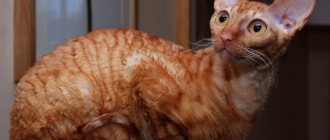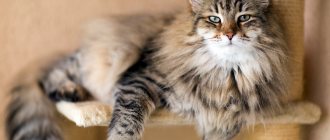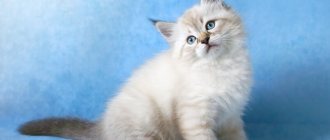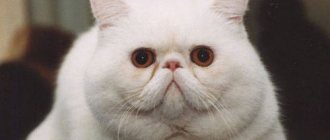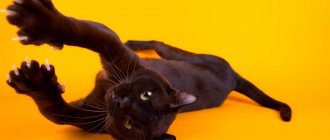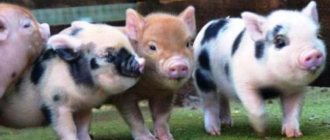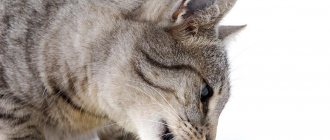Breed Features
Siamese cats are one of the oldest breeds of the Siamese-Oriental group, which was bred in Siam.
Important! From ancient legends it is known that Siamese cats accompanied the souls of their owners into the afterlife. You could pay with your life for trying to take a Siamese abroad or for causing harm to the animal.
Siamese cats are very jealous. They are the center of attention. Therefore, they do not always get along with other pets (cats, dogs) and do not get along well with children.
Siamese cats cannot tolerate prolonged separation from their owners. Leave the house for a long time, provide your pet with toys so that the cat does not get bored in your absence.
It is believed that Siamese are very picky eaters. In some ways this is true. Siamese are great gourmets and may show interest in foods that cats might not expect. For example, your pet can eat seeds, nuts, mushrooms, and fruits.
In general, there are no problems, but still, do not forget that not all the products and treats that we offer to the fluffy are good for his health and, in particular, digestion.
What should you not give?
When choosing products to feed Siamese cats, you need to be as demanding as possible.
Siamese are prone to various diseases, most of which are the result of improper feeding.
- It is strictly not recommended to overfeed your cat with fish, since over time the animal develops an allergy, causing swelling on the face in the area of the eyebrows and under the jaw. This can lead to difficulty breathing and a general deterioration in the animal’s condition. If this happens, be sure to give the animal a sorbent and an antihistamine, and then immediately contact a veterinarian.
- The same advice applies to any citrus fruit. For example, you should not offer your animal meat with orange sauce from your table. Your pet will definitely beg for it, but show restraint and don’t give it.
About the diet of Siamese cats, see below.
Choosing a place and dishes
For a comfortable life, a Siamese kitten needs to arrange a place to rest and sleep, purchase various toys, preferably interactive ones, and grooming and hygiene products (brushes, shampoos, sprays).
Set up a place where your Siamese kitten will eat and drink water. Bowls for food and water should be placed in a secluded, quiet place. During meals, the cat should not feel stressed. If there are other animals in the house, so that the Siamese does not experience discomfort, cat containers can be placed on the windowsill, cabinet, or other elevations accessible to the kitten.
Bowls can be:
- made of high quality plastic;
- ceramics;
- glass;
- clay;
- stainless steel
Advice! Do not use aluminum kitten bowls. When in contact with certain products and high temperatures, this metal releases harmful chemical compounds that pass into food and feed.
When choosing a material for cat dishes, consider its quality parameters and ease of care.
For food, bowls should be wide and not too deep. If you plan to feed dry, ready-made food, you can purchase one bowl, divided into several sections. Make sure that your pet's whiskers do not come into contact with the edges of the dishes while eating. Bowls should be stable and not make noise while your pet is eating food.
As for drinking water bowls, Siamese are quite picky in this regard. Some pets want to drink water from our dishes or only from the tap, others prefer to lap up water from a bucket. Indeed, the Siamese breed is prone to gigantism. Therefore, taking into account this feature of cats, place a deep, wide bowl for water.
The choice of place and utensils largely depends on age, breed, individual physiological characteristics, and conditions of detention.
After each meal, be sure to wash bowls under running water without using any household chemicals. Containers for food and water should always be clean.
Feeding prepared food
Ready-made industrial food for Siamese cats can be a real salvation if natural feeding does not work out in any way and the cat turns up its nose at cooked food. Also, this type of food is great for those new to caring for and maintaining Siamese.
Ready-made food contains premium and super-premium quality ( Hills, Purina Pro Plan, Royal Canin, etc.
) contains all the nutrients, vitamins and microelements necessary for a cat in an optimal ratio. You need to buy them exclusively in specialized stores. Before paying, you should study the composition and check the expiration date of the product.
You need to select ready-made food taking into account the individual characteristics of the cat: gender, age, physiological state, lifestyle, etc.
It is good if, before purchasing, the animal was accustomed to ready-made food. In this case, it is advisable not to change the brand.
Ready-made food can be wet, dry or in the form of “snacks”. Combining species in one meal is not recommended, as is mixing products from different manufacturers.
Sample menu by age
When creating a sample menu by age for Neva kittens, take into account the digestive characteristics of your pet.
In the first 11-13 months, you should not dramatically change the Siamese’s diet. Stick to the feeding schedule, routine and routine. If there is a need to replace the diet, the transition should be gradual.
Up to a month
Up to a month from birth, the main nutrition of newborn kittens is maternal colostrum and milk, which contain nutrients for development and protective antibodies.
If the kittens are orphaned, Siamese are transferred to artificial feeding or they look for another nursing cat who will take care of other people's babies. Up to two weeks, the kitten eats 9-10 times without stopping to sleep at night, drinking 3-4 ml of milk at a time.
For artificial feeding, cat milk substitutes and infant formula without sugar or fillers are used.
1 month
At 1 month, kittens continue to feed on their mother's milk. To feed artificial kittens, high-quality cat milk substitutes and infant formula are also used. Ready-made formulations in the form of capes for feeding kittens from 1 to 3 months are also available for sale.
The first complementary foods are gradually introduced per month. Children are given boiled minced chicken, meat pates, and purees. The average daily norm is 50-85 g.
2 months
At 2 months, in addition to mother's milk, kittens are gradually accustomed to new foods. Kittens are fed 5-6 times a day at the same time.
Feeding with natural products
For Siamese cats, it is important to create the right diet with the optimal ratio of nutrients.
And since the Siamese cat’s character is unique and it is not always possible to please it, the composition of products containing these substances is determined individually. For example, some Siamese do not like rabbit meat, in which case it is replaced with chicken or turkey. There is no need to be lazy when choosing your cat’s food experimentally. It will take a little time, but your pet will be filled with gratitude. Food is offered in the form of porridge of varying thickness. Such porridge may consist, for example, of raw carrots grated on a vegetable grater, boiled oatmeal and chopped pieces of meat. If the cat chooses pieces of meat from the bowl and refuses to finish the rest, you should change the cereal or add meat that has been twisted in a meat grinder.
With a natural diet, the Siamese cat is given:
It should be lean. Well-suited beef, lamb, chicken, turkey, rabbit, etc. Before feeding, it is boiled or scalded and cut into small pieces. Some owners offer Siamese raw meat. In this case, it must be frozen. Meat pieces can be cut and frozen in portions, defrosting immediately before use. Typically, meat makes up 2/3 of the diet.
By-products
A very useful component of the diet, which some cats may ignore. For a Siamese cat it will be useful: heart, liver, lung, udder, tripe. Invite your pet to try each of the products, let her choose according to her taste.
Despite the fact that fish is the favorite food of the Siamese cat, it should not be abused. It is enough to include this product in your pet’s diet no more than 2 times a week and instead of meat. Preference should be given to low-fat fish: navaga, cod, flounder, tuna, etc.
Siamese cats can only be given boiled yolk. This is a good source of healthy vitamins.
Groats
Oatmeal, corn, rice, and barley are perfect. They are used to cook porridge in water. Cereals in the form of flakes can simply be steamed with boiling water.
Vegetables and greens
It is important not to overdo it with vegetables in the diet of Siamese cats, as this breed does not digest fiber well. In small doses, you can give boiled cabbage, carrots, potatoes, fresh cucumbers, sprouted greens, etc.
Dairy
Vitamins and supplements
Mineral preparations, vitamins and supplements should compensate for the lack of all nutrients necessary for a growing body. It is best to use ready-made complex vitamin and mineral formulations that your veterinarian will recommend (Tetravit, Trivit, Gamavit).
You can give your Siamese dry yeast, meat and bone meal, crushed eggshells, and fish oil.
With a ready-made diet, vitamin supplements are not given to the kitten, since high-quality food contains all the necessary substances, including essential amino acids.
Water
Drinking fresh and clean water should always be freely available to the Siamese kitten, regardless of its diet. Use only filtered, settled or bottled water without carbonation. Kittens love to drink water straight from the tap. But it contains chemical compounds, chlorine and other elements of the periodic table that will not benefit the pet’s body.
Change your drinking water at least once a day. Before changing the water, rinse the bowl and wipe it off with a clean sponge.
What not to feed a Siamese kitten
Some food products and ready-made foods can harm the digestive tract of a Siamese kitten and even provoke further systemic disorders, metabolic disorders, and chronic pathologies in the functioning of the endocrine and digestive systems.
What you should not feed a Siamese kitten with a natural diet:
- sweets, fresh baked goods;
- sweet fruits, vegetables that cause fermentation and flatulence;
- stale, rotten, moldy products;
- mushrooms;
- legumes (soybeans, corn, beans);
- pasta;
- canned fish;
- frozen or steamed fresh meat;
- low-quality by-products;
- salty, spicy food;
- fat meat;
- by-products of dubious origin;
- food for dogs, adult cats, economy class products;
- smoked meats (sausages, frankfurters).
